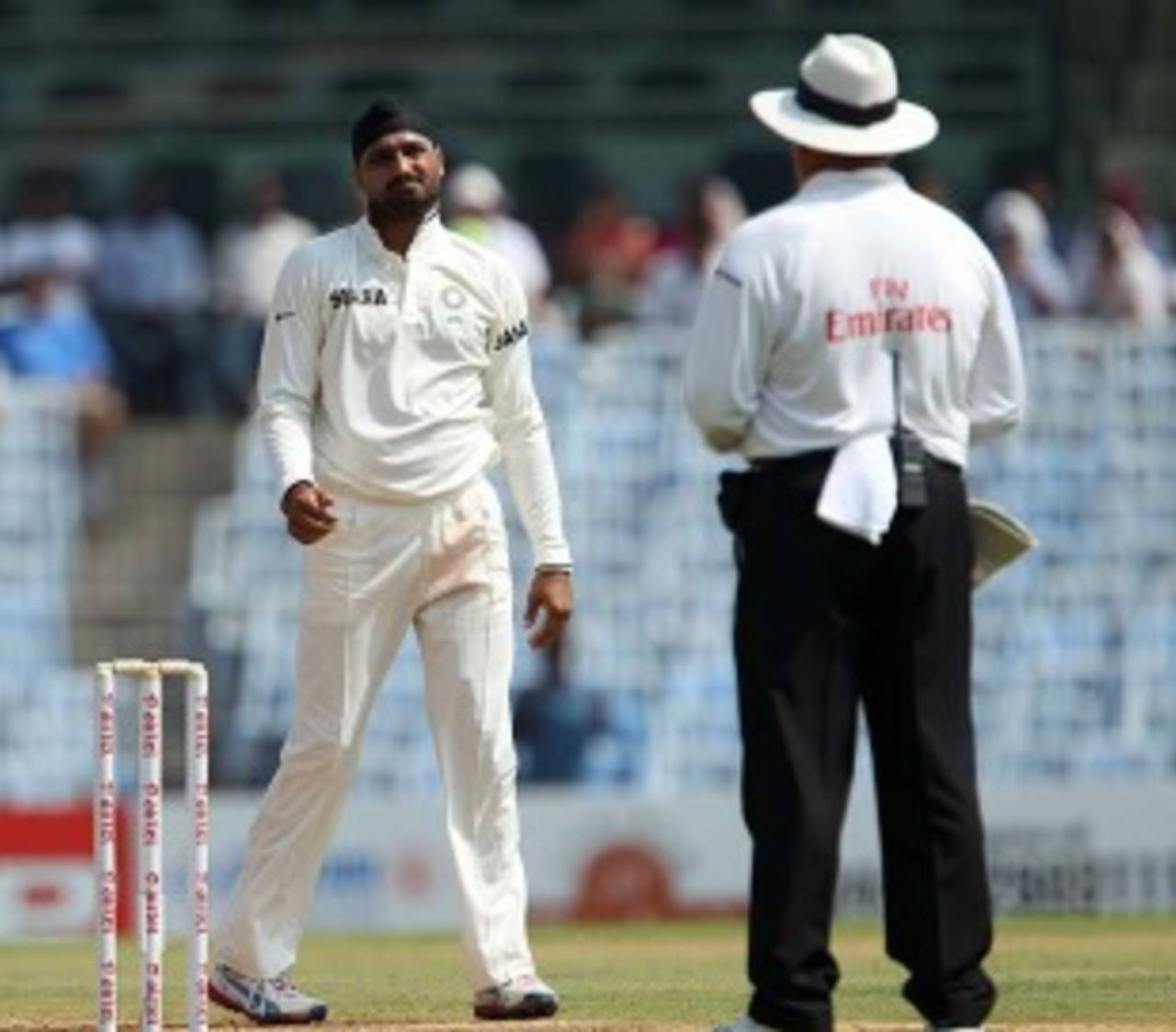'Pick people who can bowl legally' - Richardson
David Richardson, the ICC's chief executive, has clarified that the message behind the recent drive against bowlers with suspect actions is to refrain teams from picking "players who have got suspicious actions"
ESPNcricinfo staff
25-Nov-2014

David Richardson said bowlers reported for suspect actions could take a cue from Harbhajan Singh's career • BCCI
David Richardson, the ICC's chief executive, has clarified that the message behind the recent drive against illegal bowling actions is to stop teams from picking "players who have got suspicious actions". Richardson also lauded the efforts undertaken by India offspinner Harbhajan Singh for rectifying his action after being reported twice in his career.
The issue of tackling suspect actions had come up during the ICC's cricket committee meeting in June, when there was a general consensus among members that the methods used to detect illegal actions were imperfect.
"We reached a stage where too many bowlers were starting to bend the rules," Richardson said on the sidelines of an ICC promotional event in New Delhi. "And the cricket committee backed up by the ICC Board decided that action needed to be taken.
"Having said that, I really think that bowlers that have been reported are doing the right thing by working on their actions to come back as legal bowlers. And also the message is out there loud and clear to teams that don't mess, don't pick players who have got suspicious actions. Pick people who can bowl legally."
The ICC's sustained drive against suspect actions has hit the offspinners the most, with Saeed Ajmal, Sohag Gazi, Sachithra Senanayake, Prosper Utseya, Kane Williamson, all earning suspensions. Pakistan's Mohammad Hafeez and Zimbabwe offspinner Malcolm Waller were recently reported for suspect actions. Ajmal has been working on his action and has undergone a few unofficial tests. Senanayake underwent an official retest of his action in Chennai last Sunday.
Richardson hoped the bowlers under the scanner would take a cue from Harbhajan's example. The Indian offspinner had been reported in November 1998 and underwent corrective work on his action in England afterwards. He was reported for a second time in December 2004 and his action while bowling the doosra was also called into question again in March 2005.
"At one stage his action came under a bit of scrutiny. He did a fantastic job in adapting his action to make sure that he was now bowling legally," he said. "And now there is no question mark about the way he bowls. I think yes the ICC has cracked down on bowlers that are extending their arm during the delivery and there is no conspiracy about the timing of it."
Harbhajan, who also attended the event, urged bowlers to adhere to the 15-degree flex limit.
"Not just once, but twice I have been called. Once it was 1999 when I just started my cricket and 2006," Harbhajan said. "So there is a limit set by the ICC and if any bowler goes beyond that limit there are people who are watching it. They are not asking anyone to stop playing cricket but all they are saying just go to the school and learn to bowl within the limits of ICC.
"So I think it is great thing what you have done and, as Dave said, the doors are not closed for anyone, if you bowl within the limit you can still play cricket and enjoy bowling the doosra or whatever delivery you want to bowl. So it's a great initiative taken by the ICC."